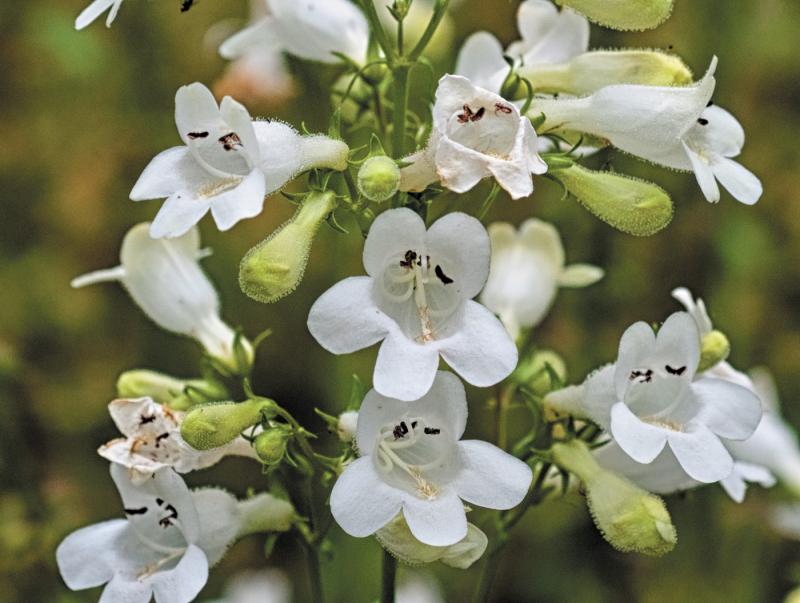Eleven-year-old Grace Bedell wrote Abraham Lincoln and convinced him to grow a beard. Not only did the beard become Lincoln's defining look, but it may have protected him from skin cancer, because beards block up to 95 percent of cancer-causing ultraviolet rays.
Beards keep asthma-causing pollen and dust away from your nose. So maybe you should plant beards in your garden?
Penstemon digitalis, better known as beard tongue, is a three-foot-tall native wildflower that blooms with white, bell-shaped flowers from late May through June. They easily fill the gap between spring bulbs and summer flowers such as coneflowers and coreopsis.
The name beard tongue comes from the hairy lower lip of the flower. This helps increase the efficiency of flower pollination when bees visit. The lower lip also has purple stripes that actually guide bees to the nectar deep down in the flower’s throat.
Beard tongue forms large clumps that are attractive even when not in bloom. After the flowers fade, the shiny brown seed capsules stay on for color even in the late summer garden. In fall the leaves change to a brilliant, beautiful red.
Plant beard tongue at the edge of your garden, in meadows, along roadsides, and right in your flowerbeds. These hardy plants grow best in full sun to light shade in almost any type of soil. Beard tongue even grows well in hard, compacted city soils.
Pair beard tongue with Virginia day flower (Commelina virginica), which blooms alongside it. Or try planting it with gray goldenrod (Solidago nemoralis) for striking red and gold colors in autumn.
Beard tongue flowers are attractive to bees, especially bumblebees. They also bring butterflies and hummingbirds to your garden.
As native wildflowers, they are very easy to grow. They are deer resistant and will spread or naturalize.
Plant them in non-fertile soil that drains well. Soil that has lots of sand or gravel is perfect. Avoid wet clay soils and soil that is too rich.
When planting, set the plants high, leaving the top of the rootball just slightly above the surrounding soil; never cover the crown of the plant. They look best when set out in groups of three to five plants.
They do well with one inch of water per week during the summer. If you need to water them, water deep, but not often. Let the flowers fade and form seed pods. You will find that seedlings from the original plants are often healthier, more vigorous and longer-lived than their parents. They are hardy in USDA zones 4-9.
To hold in moisture, you may want to mulch with gravel. This will encourage reseeding while protecting the crowns from rotting from being wet over the winter. Avoid organic mulch such as bark, compost, or grass clippings, because they can bring on fungal problems which rot the plants.
Sow some seeds or plant seedlings of beard tongue, and you will help pollinators and reward yourself with carefree flowers for years to come. And just maybe they will inspire you to grow a beard. Look what it did for Abe Lincoln.























































